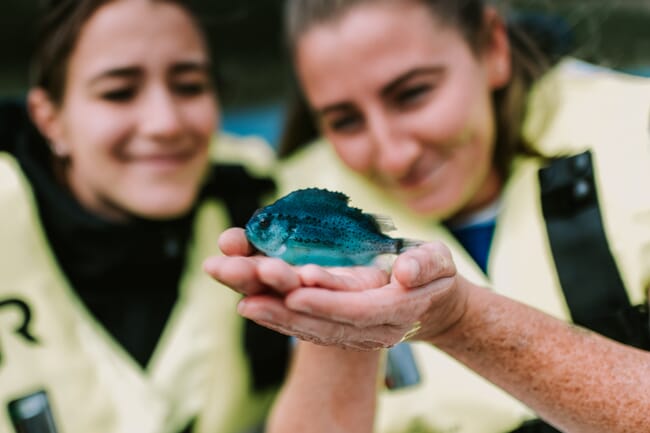It has been demonstrated that lumpfish, which are stocked in aquaculture pens to pick parasitic sea lice off salmon, regularly develop cataracts – an issue that raises animal welfare issues as well as lessens their efficacy as cleaner fish.

© BioMar
As BioMar notes in a press release, at least 60 percent – and up to 100 percent – of lumpfish deployed as cleaner fish typically develop a severe form of the condition.
However, in order to combat this trend, the feed firm has launched a new Symbio recipe, which it says will “make a significant contribution to improving fish welfare and their lice-grazing efficiency”.
Cataracts cloud the lens of the eye, reducing vision and potentially leading to blindness. Lumpfish are visual lice grazers, and any impairment of their vision caused by sub-optimal nutrition will clearly reduce their health, welfare and performance. For lumpfish to be used effectively in controlling salmon lice biologically they must be healthy and alert.
“Lumpfish with severe cataracts will have difficulty in identifying and consuming nutrients, including salmon lice. Also, a reduction in feed uptake can undermine the general health of the fish, increasing the risk of infectious disease,” said Elisabeth Aasum, global R&D health manager at BioMar.
Past studies of cataracts in lumpfish have identified nutritional imbalances, with high levels of specific amino acids in certain tissues. In a recently-completed controlled feed study, BioMar found a high incidence of cataracts in lumpfish fed a control feed with a protein and fat content typical for marine cold-water species. The incidences ranged from 60 per cent to 100 per cent, with an average cataract score of > 5 – in other words a high incidence of severe cataracts.
BioMar conducted the same study on three alternative fish feed diets and no traces of cataracts were found. The common feature of these recipes was a reduction in the content of both protein and fat when compared with the control feed.
Torunn Forberg, lead BioMar scientist on the research project, stated: “A balanced reduction in nutrient density was decisive in avoiding the eye disease. Moreover, during the study, the reduction in nutrients did not have any negative affect on normal growth rates, feed utilisation and survival rates for transfer sized fish at 50g.”



